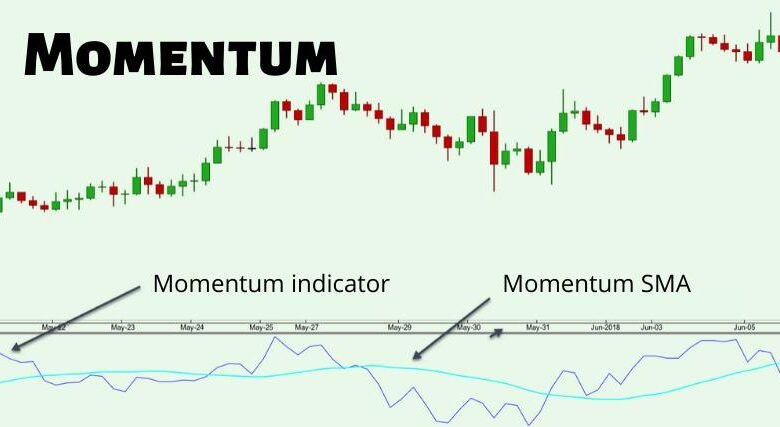How to Identify Immediate Momentum Shifts in the Market

Are you looking to grow your riches and achieve financial liberty?
Well, there are several ways you can follow to fulfill your financial dreams. Some get you to reach your goals early, while others take time. Today’s generation lacks the patience required to attain long-term wealth stability. They look for quick ways to accomplish their goals. Trading through financial markets is a way that may help individuals attain financial success relatively in a shorter period than other ways.
AI trading apps are operating with flying colours in the financial world. These apps have opened up infinite ways to help individuals grow financially. Traders use several trading techniques that fit their liking. Some prefer short-term techniques while others go for long-term methods.
Immediate momentum is a well-known trading method that presents a brief way to attain little but steady profits. It benefits those who can’t wait to make progress in the financial world.
This article will teach you how to identify immediate momentum shifts in the market.
What are Immediate Momentum Shifts in Financial Markets?
An immediate momentum shift is a sudden change in the value of a digital asset. This shift could be upward or downward. These are sparked by the market atmosphere. The immediate momentums can be used as a trading technique by traders. Using these sudden price highs or drops, traders can make decisions accordingly.
Traders tend to buy an asset when its price moves in the upward direction. They hope the price will continue increasing for some time. After the price reaches its peak value, it suddenly drops. Before the price of the asset falls to its average value traders exit their positions. Thus, they benefit from the price difference between buying and selling. As they purchase the asset at a low price and sell it when its price is maximum. This is how an immediate momentum shift is used to make a profit.
How to Spot Sudden Trend Reversals in Financial Markets?
Sudden trend reversals in business markets can alter the trading results adequately. This notable effect of these reversals makes it necessary for traders to learn about the factors that result in these changes. They need to spot these immediate reversals and find the reasons behind them. This is how they can timely sense these changes and use them for profit win.
The following methods and tools are used for the identification of sudden price reversals.
Price Action and Candlestick Patterns
Candlestick patterns, such as hammer or engulfing patterns, point out price reversals. If these patterns are formed at support or resistance levels, they signify an abrupt change in asset prices.
Technical Indicators
They also prove to be very useful in the identification of price reversals. RSI is one effective indicator. When it enters overbought or oversold regions, it indicates a considerable reversal. In the same way, variations between price displacements and indicators like MACD signal the weakening of the present trend. This weakening results in an opposite trend.
Volume Study
It also helps equally. When an asset is traded in high volumes, it shows a big change in the market. It happens in response to a trend reversion. When the price of an asset keeps rising but not many people are buying that asset, it signals a price fall of the asset. In like manner, if the price of an asset is low but only a few people are selling it, it indicates that its price will start increasing soon.
Fundamental Catalysts
These also result in considerable trend reversals. Economic data and geopolitical happenings are counted among these fundamental catalysts. They might result in quick changes in market sentiments. Changes in market sentiments lead to trend reversals. Due to their grand impacts, traders need to stay knowledgeable about macroeconomic factors and news events.
Market Psychology
Traders should keep this aspect in their mind as well. In extreme conditions, the possibility of opposite actions increases. Tools like the Fear & Greed Index can help traders estimate the market’s emotional condition.
Techniques for Detecting Quick Momentum Changes in Trading
Moving Averages and Crossovers
The moving averages help traders spot price trends. This is a simple and dependable method for trend guessing. They smooth out price data to help traders identify trends easily. Immediate momentums can also be detected using these crossovers. When a short-term average of 5-10 days surpasses the long-term average, it indicates an upward price move. Similarly, when a short-term average moves below a long-term average, it signals a downward price move.
Relative Strength Index
RSI assists traders in measuring the speed with which changes in the price of an asset occur. It also tells about the size of the price change. Its rating ranges between 0 and 100. If the RSI shows a rating above 70, it marks an abrupt price high in the value of an asset that is about to fall back soon. If the RSI is at number 30, it marks that the asset’s price has lowered very quickly. But it can reverse very soon. If the RSI transverses in the direction of the price, it signals a declining momentum and a possible reversal.
Bollinger Bands
With the help of Bollinger Bands, the overbought or oversold condition of an asset can be measured. It shows two divergences in price moves, above or below a moving average. It consists of three bands. The upper, middle, and lower bands. If the price of an asset rises over the upper band with many people buying it, it shows a powerful price high. If the price falls below the lower band, it indicates a price drop of the asset.
Trendlines and Breakouts
Support and resistance levels can be viewed well with the trendlines. These are drawn on price charts. Traders can easily figure out support and resistance limits. A breakout above a trendline with rising volume points out a buying signal. A breakdown below a trendline points out a selling signal.














